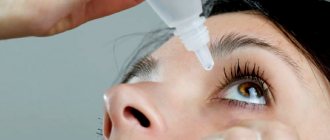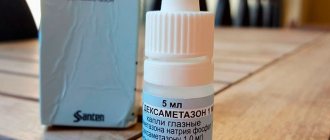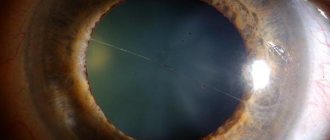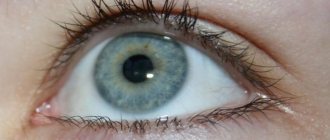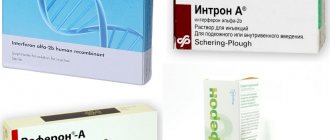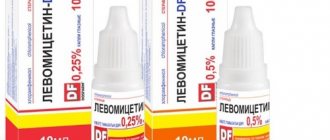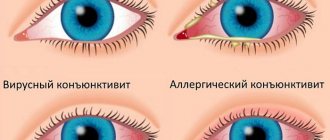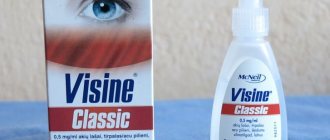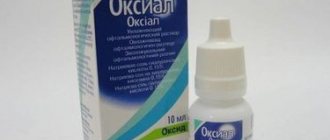Eye drops are medications to eliminate ophthalmological problems: dryness, inflammation, complications after operations. Among them are special drops that doctors use when conducting examinations and diagnostics. These medications include Tropicamide. But in the last 5 years, this drug has found another use - a drug.
Tropicamide - what is it?
Tropicamide is a colorless eye drop that is used to dilate the pupil. The medicine is packaged in a transparent bottle with a spray. The main component of the drug is methylenedioxymethamphetamine, which has psychoactive properties.
Application in ophthalmology
In ophthalmology, eye drops are used to dilate the pupil. This is achieved by blocking the nerve receptors that are located in the eyeball.
Tropicamide is necessary when examining the lens; drops help check the refraction of a light beam. Ophthalmologists can thoroughly examine the fundus of the eye when the pupil is enlarged.
In complex treatment, drops are prescribed to treat inflammation and prevent adhesions of the iris to the lens or cornea.
Tropicamide as a drug
Previously, drug addicts used Tropicamide to hide a sign of using illegal substances from the opiate group - constriction of the pupils. However, over time, drug addicts realized that eye drops increased the effect of the banned substance. Thanks to this, you can reduce the dosage of the main drug by almost half and experience a great “high”. This quality is very attractive to drug addicts, because they can save money on their next dose.
If Tropicamide is used as a separate drug, a person experiences intoxication and hallucinations.
How addicts take drugs
Drug addicts use Tropicamide for placement into the nasal cavity or eye, or for intravenous administration.
Into the nose
Addicted people often put drops into their nose, since from there the substance quickly travels through the blood vessels to the brain and causes the desired narcotic effect. This method is mainly used by adolescents and beginners who have not yet reached intravenous administration.
Intravenously
For intravenous injections, drug addicts use 1% eye drops. Tropicamide is often mixed with other narcotic substances to enhance their effect; some are used in its pure form to produce a “trip”.
Effect
Drug addicts inject Tropicamide eye drops intravenously without realizing the full extent of the damage they cause to their bodies.
- When drops penetrate the bloodstream, irreversible changes are triggered in the body, which are associated with the decomposition and death of intraorganic structures.
- If a drug addict systematically administers high dosages of the drug, rotting processes begin in the body. The drug addict develops abscesses on his body, his limbs or face swell.
- Due to the abuse of this drug, the body weakens, the immune system is suppressed, and disturbances in the functioning of the heart and pulmonary system appear.
As for the psycho-emotional sphere of a drug addict, under the influence of drops he can bring himself to an abnormal state. A tropicamide addict may not react at all to others and simply periodically inject himself with dose after dose until the drug runs out or he loses consciousness.
In the video about the use of the drug Tropicamide as a drug:
Effect of Tropicamide and action
Eye drops enhance the effect of drugs, but help reduce their duration of action. As a result, patients begin to take illicit substances more often, and their tolerance to them also increases.
If the drops are combined with heroin, the narcotic effect increases, in addition, some unpleasant symptoms will occur:
- Deterioration of vision (temporary)
- Hallucinations at higher dosages
- Tactile and senestopathic sensations on the skin
Eye drops enhance the effect of psychostimulants, desomorphine. Amphetamine drug addicts, having become familiar with the “high” from eye drops, eventually switch completely to Tropicamide. If pure medication is administered intravenously, the effect will last about 40 minutes. Under the influence of the drug, people feel unusually light and find it difficult to stand on their feet. When a person lies down, he feels warm and light, but at the same time there is anxiety, dry mouth, and changes in sensitivity.
Drug addicts feel that:
- Skin becomes rough and dry
- Hair is thin and soft
About 10 minutes after taking it, the desire to sleep appears, but it is different from the sensations that arise after taking sleeping pills. In addition, hallucinations appear, drawings become three-dimensional. After 30 minutes, drowsiness goes away, leaving pleasant sensations throughout the body.
Tropicamide eye drops
The drug Tropicamide is a drug widely used in ophthalmology, which is intended for instillation into the eyes. These drops help dilate the pupil, which is necessary for the doctor to thoroughly examine the fundus. In addition, a similar drug is used for adhesions in the apple of the eye and inflammatory pathologies.
Tropicamide belongs to the group of drugs M-anticholinergics. It blocks nerve impulse signals in specific nervous system receptors.
Since such an effect is provided not only on the nervous system receptors of the eyes, the drug began to be used by drug addicts to obtain a narcotic effect. However, despite the lack of indications in narcology, Tropicamide is not officially considered a narcotic drug.
Compound
The active component of the drops is the substance - tropicamide. The following substances are present in the preparation as auxiliary components:
- Hydrochloric acid;
- Sodium chloride;
- Benzalkonium chloride;
- Ethylenediaminetetraacetic acid;
- Deionized purified water.
Mechanism of action
Tropicamide is a mydriatic drug. About 5-10 minutes after instillation, mydriasis occurs - pupillary dilatation. Maximum expansion occurs after approximately 25-45 minutes and lasts approximately an hour. After 6 hours, the pupil returns to its original size.
If a significant amount of drops gets on the mucous tissues of the oral and nasal cavities, there is a possibility of developing a coma, which can lead to the death of the patient. Therefore, the drug can only be used topically, by instillation into the eyes. Among the adverse reactions of the drug, experts call increased nervous excitement, convulsive muscle contractions, dry skin and mucous membranes, and increased heartbeat.
At first, Tropicamide was used by drug addicts for its intended purpose, that is, to dilate the pupils. This effect made it possible to hide constricted pupils after using opium drugs. But then someone managed to discover another effect on the body. When used together with narcotic substances, Tropicamide enhances their effect. As a result, it was possible to significantly reduce the dose of the usual drug, and the addict received a feeling of “high”, just like the first time.
However, drug addicts did not take into account a significant fact - when using Tropicamide, drug addiction increases, and withdrawal becomes many times more severe. Moreover, the drops themselves can provoke something similar to euphoria, so many drug addicts use them to cope with withdrawal symptoms, alleviating their condition, and some even become intoxicated with hallucinations.
Signs of overdose
Unfortunately, overdose is quite common among drug addicts. This condition is often fatal.
Overdose symptoms:
- Pain in the eyes
- Photophobia
- Farsightedness
- Dry skin
- Difficulty swallowing
- Tachycardia
- Confusion
- Hallucination
- Waxy skin tone
- Seizures and epilepsy
- Breathing problems
- Dry mucous membranes
- Breathing problems
- Nervous system depression
- Coma or death
What do narcologists say?
Narcologists say that drugs also have their own fashion. In the 90s, they used expensive heroin and poppy straw, from which opium extract was produced, then psychostimulants came - amphetamine, ecstasy. Next came pervitin, a “screw,” which was produced using many substances, including potassium permanganate. Then the period of tramadol began.
And now the fashion has come for tropicamide - one of the most dangerous drugs. Once in the blood, tropicamide causes irreversible processes in the body, internal organs simply die and decompose. The skin of drug addicts on tropicamide becomes yellow within a few weeks. Hemoglobin levels and blood pressure are greatly reduced, epileptic seizures can occur, and the heart ages quickly. Vision deteriorates, panic fear of light occurs. The drug quickly leads to personality degradation. Tropicamide has the ability to accumulate in the body, like arsenic. When a critical point is reached, the kidneys or liver fail.
Consequences of use
Intravenous administration of the drug in its pure form leads to instant dependence.
The use of drops for non-medical purposes and increased dosage leads to a number of negative consequences:
- Deterioration of vision, possible complete loss
- Photophobia
- Depression
- Suicidal tendencies
- Cirrhosis of the liver
- Nephritis
- Hepatitis
- Impaired memory and concentration
- Anemia
- Hallucination
- Decreased intellectual activity
- Rapid exhaustion
- Decreased immunity, which provokes the development of inflammatory processes and colds
- Metabolic disease
- CNS lesions (epilepsy, seizures, encephalopathy)
People dependent on Tropicamide often die 1.5 - 2 months after starting to use it.
Signs and symptoms of use
It is very important for loved ones to know what signs indicate intravenous use of Tropicamide:
- In a tropicamide addict, after just a few uses, the skin becomes gray-yellow, which is associated with a sharp decrease in hemoglobin level (5 times less after a few doses);
- A drug addict who uses these drops in normal sunlight begins to have severe watery eyes, develops photophobia, and then his vision begins to rapidly deteriorate;
- After a few months of tropicamide treatment, the drug addict’s internal tissues begin to rot, and seizures often occur, like in epileptics.
These are the signs that indicate that a person has become a tropicamide addict. Therefore, if there is a sudden and causeless appearance of a gray-yellow skin tone in your loved ones and other signs, it is worth taking a closer look at the person and, if necessary, helping.
Treatment of addiction to Tropicamide
Treating addiction to eye drops is not a simple matter; you won’t be able to overcome your addiction on your own. Even after undergoing treatment at a drug treatment clinic, some begin to abuse again. The duration of an effective therapeutic course varies from six months to a year, sometimes longer.
Addiction therapy takes place in several stages:
- The body is cleansed of drug breakdown products. The goal of detoxification is to completely cleanse the body of toxins. In addition, after detox therapy, some withdrawal symptoms are eliminated. Painkillers and relaxing medications are used to relieve withdrawal symptoms
- Treatment of diseases that developed as a result of drug use. Therapy will be effective if it is started in the early stages of the pathology
- Rehabilitation course. The patient is taught to live without drugs, to enjoy life without the use of prohibited substances. Most often, rehabilitation is carried out using the well-known 12-step program
- Resocialization, after its completion a person can again become a full-fledged member of society
After completing a full course of treatment and rehabilitation, it is useful to change your place of residence and telephone number. This minimizes the likelihood that a meeting will take place with former friends with whom Tropicamide was used. Support from loved ones is also important for drug addicts. Tropicamide is a medicine, the use of which for non-medicinal purposes makes it poisonous to the body.
